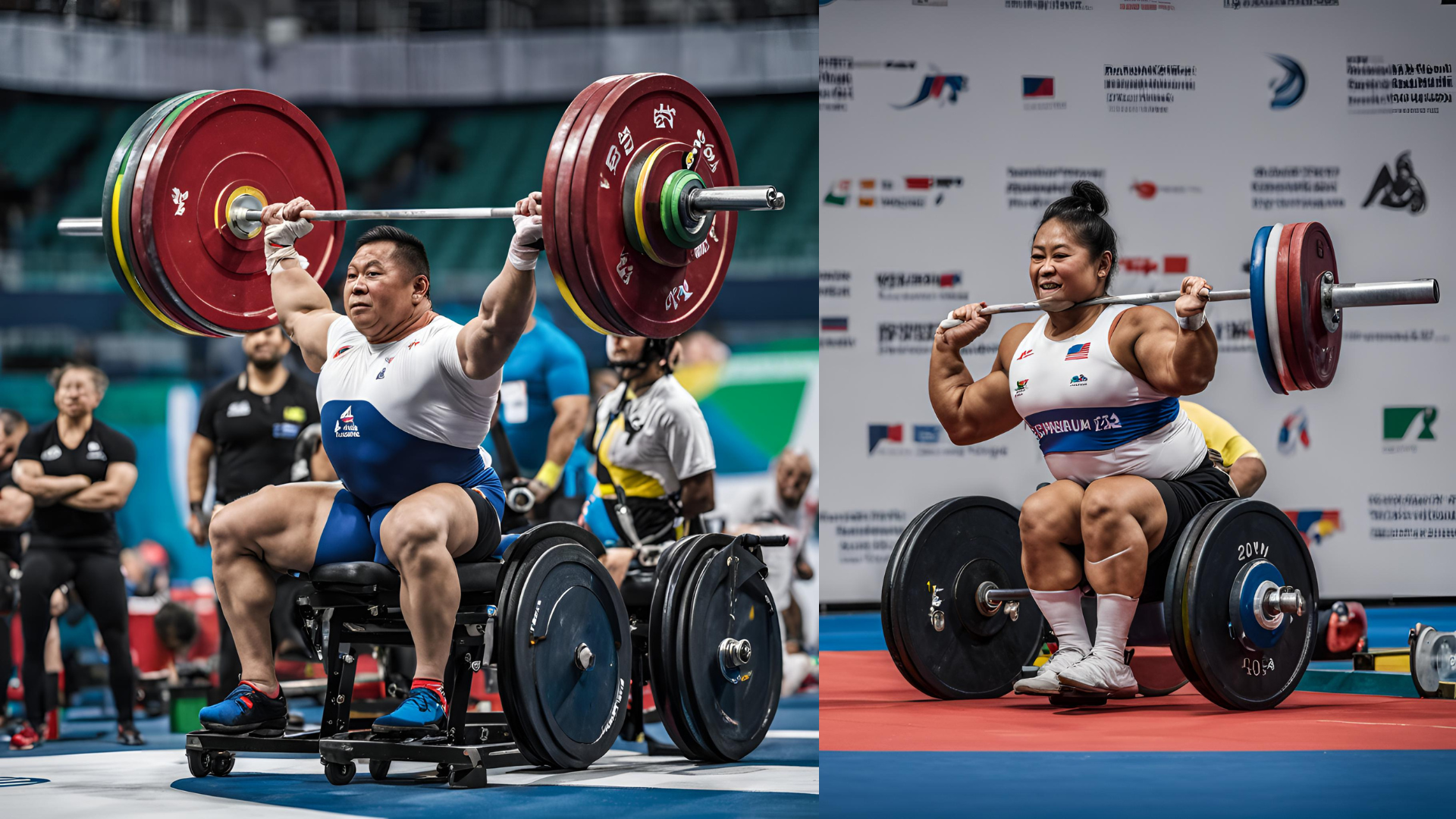Introduction
Wheelchair Tennis Paralympics is a remarkable sport that showcases the incredible athleticism, determination, and skill of athletes with physical disabilities. Since its introduction to the Paralympic Games in 1992, the sport has grown in popularity and prestige, becoming one of the most anticipated events in the Paralympic calendar. As we look ahead to the 2024 Paralympics, this article will explore the history, rules, classifications, and top athletes in wheelchair tennis, as well as the expected highlights and trends for the upcoming games. This comprehensive guide aims to provide all the information you need to understand and appreciate wheelchair tennis at the 2024 Paralympics.
Suggested post for you: 8 Most Expensive Laptops: The Ultimate Guide to Buying Expensive Laptops in 2024
Table of Contents
The History of Wheelchair Tennis Paralympics
Wheelchair Tennis Paralympics was first introduced as a demonstration sport at the 1988 Seoul Paralympic Games. It was officially included in the Paralympic program four years later at the 1992 Barcelona Games. The sport was an instant success, drawing attention for its fast-paced action and the incredible skill of its participants.
Over the years, wheelchair tennis has expanded to include both singles and doubles competitions for men and women. The sport has continued to evolve, with changes in rules and classification systems to ensure fair and exciting competition. The 2024 Wheelchair Tennis Paralympics will mark the ninth time wheelchair tennis is featured as a medal event, with even more nations and athletes expected to participate.
Rules and Regulations of Wheelchair Tennis Paralympics
Court and Equipment
The court dimensions for wheelchair tennis are the same as those used in able-bodied tennis. The sport is played on a standard tennis court with a net in the middle. The main difference lies in the equipment: athletes use specially designed sports wheelchairs that are lightweight, highly maneuverable, and built for speed and agility.
The Two-Bounce Rule
One of the most significant rule adaptations in wheelchair tennis is the two-bounce rule. Unlike able-bodied tennis, where the ball can only bounce once before being returned, wheelchair tennis allows the ball to bounce twice. The first bounce must occur within the bounds of the court, while the second bounce can occur either in or out of bounds. This rule is crucial as it accounts for the reduced mobility of players compared to their able-bodied counterparts.
Classifications
Wheelchair tennis has two main classifications: the Open Division and the Quad Division.
- Open Division: This classification is for athletes with a significant physical disability that affects one or both legs but allows them to use their arms and hands without restriction.
- Quad Division: This division is for athletes with impairments that affect both their legs and arms. These players may have limitations in hand and wrist movement, requiring the use of specially adapted equipment, such as rackets with handles that can be secured to the player’s hand.
The Rise of Wheelchair Tennis Paralympics
The growth of wheelchair tennis has been nothing short of phenomenal. Since its inception, the sport has attracted top talent from around the world, with many athletes becoming household names. The increased media coverage and sponsorship have further fueled the sport’s popularity, making it one of the most-watched events at the Paralympics.
Key Milestones
- 1992 Barcelona Paralympics: Wheelchair tennis debuts as an official medal event.
- 2000 Sydney Paralympics: The Quad Division is introduced, allowing athletes with more severe disabilities to compete.
- 2012 London Paralympics: The sport garners record viewership, with matches broadcasted to millions of viewers worldwide.
- 2021 Tokyo Paralympics: Wheelchair tennis sees an increase in participation, with 104 athletes from 31 countries competing.
Top Athletes in Wheelchair Tennis Paralympics
Wheelchair tennis has produced many legendary athletes who have dominated the sport over the years. As we approach the 2024 Paralympics, here are some of the top players to watch:
Men’s Singles
- Shingo Kunieda (Japan): A dominant force in the sport, Shingo Kunieda is widely regarded as one of the greatest wheelchair tennis players of all time. With numerous Grand Slam titles and Paralympic gold medals, Kunieda’s technical prowess and mental strength make him a formidable opponent on the court.
- Alfie Hewett (Great Britain): A rising star in the sport, Alfie Hewett has made a name for himself with his aggressive playing style and remarkable consistency. Hewett has already secured several major titles and will be a strong contender for gold in 2024.
Women’s Singles
- Diede de Groot (Netherlands): The current world number one, Diede de Groot, has been virtually unbeatable in recent years. Known for her powerful groundstrokes and tactical intelligence, de Groot has won multiple Grand Slam titles and is the reigning Paralympic champion.
- Yui Kamiji (Japan): Another top contender, Yui Kamiji, is known for her versatility and speed on the court. With a string of titles to her name, Kamiji will be looking to add another Paralympic medal to her collection in 2024.
Quad Division
- Dylan Alcott (Australia): A multi-sport athlete, Dylan Alcott is a legend in the Quad Division. Alcott has dominated wheelchair tennis for years, winning multiple Grand Slam titles and Paralympic gold medals. His charisma and sportsmanship have made him a fan favorite.
- Niels Vink (Netherlands): One of the younger players to watch, Niels Vink has quickly risen through the ranks with his explosive playing style and determination. Vink is expected to be a major threat in the Quad Division at the 2024 Paralympics.
The Road to the 2024 Wheelchair Tennis Paralympics
As the 2024 Paralympics approach, wheelchair tennis players around the world are gearing up for one of the biggest competitions of their careers. The road to the Paralympics is long and challenging, requiring athletes to compete in various qualifying events and accumulate ranking points.
Qualification Process
To qualify for the Wheelchair Tennis Paralympics, wheelchair tennis players must participate in International Tennis Federation (ITF) sanctioned tournaments. These events range from Grand Slam tournaments to smaller regional competitions. The players earn ranking points based on their performance in these tournaments, with the highest-ranked players securing their spots in the Paralympics.
The qualification process is designed to ensure that only the best players in the world compete at the Paralympics, making the event a showcase of the highest level of wheelchair tennis.
Training and Preparation
Preparing for the Paralympics is a rigorous process that requires a combination of physical training, technical skill development, and mental preparation. Athletes spend countless hours on the court, honing their skills and developing strategies to outplay their opponents. Off the court, they work on strength and conditioning, ensuring they are in peak physical condition for the games.
Mental preparation is also crucial, as the pressure of competing on the world stage can be immense. Many athletes work with sports psychologists to develop mental toughness and coping strategies to handle the stress of competition.
The 2024 Paralympic Games: What to Expect
The 2024 Paralympic Games, set to take place in Paris, France, are expected to be a spectacular event. Wheelchair tennis will be one of the highlights of the games, with fierce competition across all divisions.
Venue
The wheelchair tennis events will be held at the historic Roland Garros Stadium, the home of the French Open. The clay courts of Roland Garros are known for their challenging playing conditions, which will test the skills and adaptability of the athletes.
Schedule
The wheelchair tennis competition is expected to take place over ten days, with matches held from morning until evening. The schedule will include men’s and women’s singles and doubles matches, as well as Quad Division matches. The finals will be held in the last two days of the competition, with the gold medal matches being the most anticipated events.
Medal Contenders
As mentioned earlier, athletes like Shingo Kunieda, Diede de Groot, Dylan Alcott, and Alfie Hewett are expected to be among the top medal contenders. However, the Paralympics are known for surprises, and new stars could emerge to challenge the established champions.
The Impact of Wheelchair Tennis Paralympics
Wheelchair tennis has had a profound impact not only on the athletes who compete but also on the broader sports community and society as a whole. The sport has been a powerful platform for raising awareness about the abilities and achievements of people with disabilities, challenging stereotypes and breaking down barriers.
Inclusion and Representation
One of the most significant impacts of wheelchair tennis is its role in promoting inclusion and representation in sports. The visibility of wheelchair tennis on the global stage has inspired countless individuals with disabilities to pursue sports and other activities, showing that physical limitations do not have to define one’s potential.
Technological Advancements
The sport has also driven technological advancements in sports equipment, particularly in the design and development of wheelchairs. The specialized wheelchairs used in the sport are engineering marvels, designed for speed, agility, and durability.
These advancements have not only improved the performance of athletes but have also contributed to innovations in wheelchair design for everyday use.
Paralympic Legacy
Wheelchair tennis has become an integral part of the Paralympic legacy, contributing to the growth and success of the Paralympic movement. The sport’s popularity has helped elevate the profile of the Paralympics, attracting sponsors, media coverage, and new fans. This, in turn, has led to increased investment in Paralympic sports, providing more opportunities for athletes with disabilities to compete at the highest level.
Future Trends in Wheelchair Tennis Paralympics
As we look to the future, several trends are likely to shape the development of wheelchair tennis in the coming years.
Increased Professionalism
The professionalization of wheelchair tennis is expected to continue, with more players turning to the sport as a full-time career. This will likely lead to higher levels of competition, as players dedicate more time and resources to training and preparation. The growth of the sport’s professional circuit will also provide more opportunities for young athletes to pursue careers in wheelchair tennis.
Technological Innovations
Technology will continue to play a significant role in the evolution of wheelchair tennis. Advances in materials science and engineering will lead to even more sophisticated sports wheelchairs, enhancing the performance of athletes. Additionally, the use of data analytics and performance monitoring tools will become increasingly common, allowing athletes and coaches to fine-tune their strategies and training programs.
Expanding Global Reach
The global reach of wheelchair tennis is expected to expand, with more countries investing in the development of the sport. This will lead to greater diversity in the field of competitors and could result in new nations emerging as powerhouses in wheelchair tennis. The continued growth of the sport in regions like Asia, Africa, and Latin America will be crucial in driving its global development.
How to Watch Wheelchair Tennis Paralympics
For those eager to watch wheelchair tennis at the 2024 Paralympics, there are several ways to stay updated on the action.
Television Broadcasts
Major sports networks around the world will broadcast the Paralympic Games, including wheelchair tennis events. Channels like NBC (USA), Channel 4 (UK), and NHK (Japan) are expected to provide extensive coverage, including live matches, highlights, and interviews with athletes.
Online Streaming
For fans who prefer to watch online, the Paralympic Games will be available for streaming on various platforms. The International Paralympic Committee (IPC) is expected to offer live streaming on its official website and social media channels. Additionally, many sports networks will provide streaming options through their websites and apps.
Social Media
Social media will be a valuable resource for staying updated on wheelchair tennis at the 2024 Paralympics. Follow the official accounts of the IPC, athletes, and sports networks on platforms like Twitter, Instagram, and Facebook for real-time updates, behind-the-scenes content, and fan interactions.
Conclusion
Wheelchair tennis is a sport that embodies the spirit of the Paralympic Games—determination, skill, and resilience in the face of adversity. As we look forward to the 2024 Paralympics, the excitement surrounding wheelchair tennis continues to grow. With top athletes set to compete on the iconic courts of Roland Garros, the stage is set for an unforgettable display of athleticism and sportsmanship.
This comprehensive guide has provided an in-depth look at the history, rules, key players, and future trends in wheelchair tennis. Whether you’re a longtime fan or new to the sport, the 2024 Paralympics promises to be a thrilling event that showcases the very best of wheelchair tennis on the global stage.





